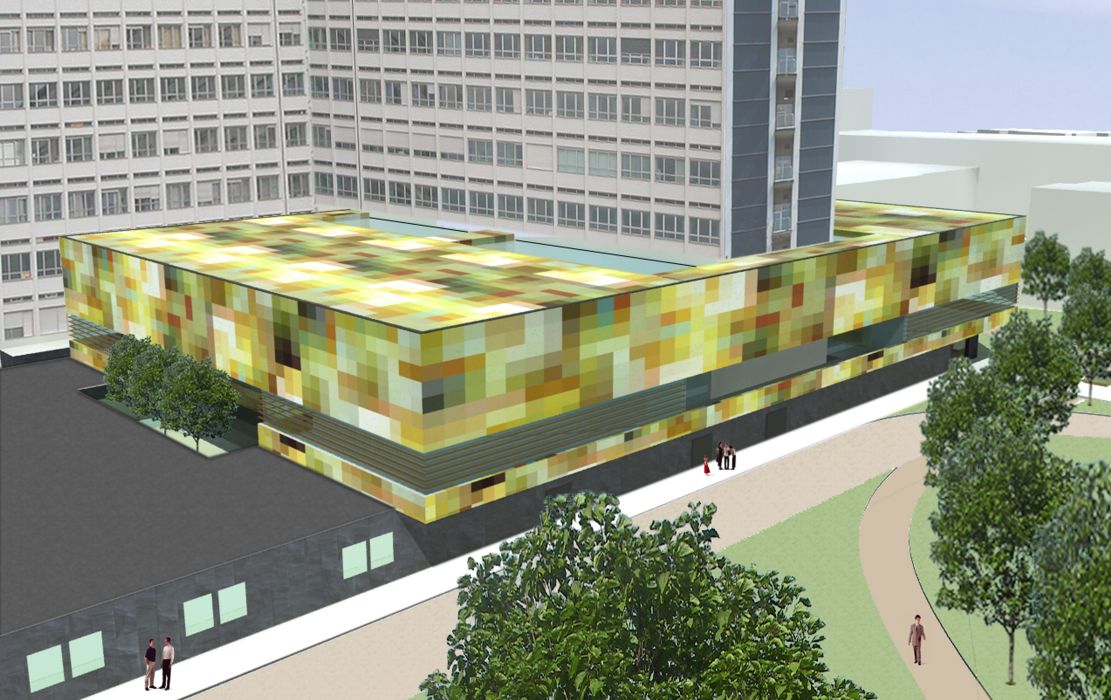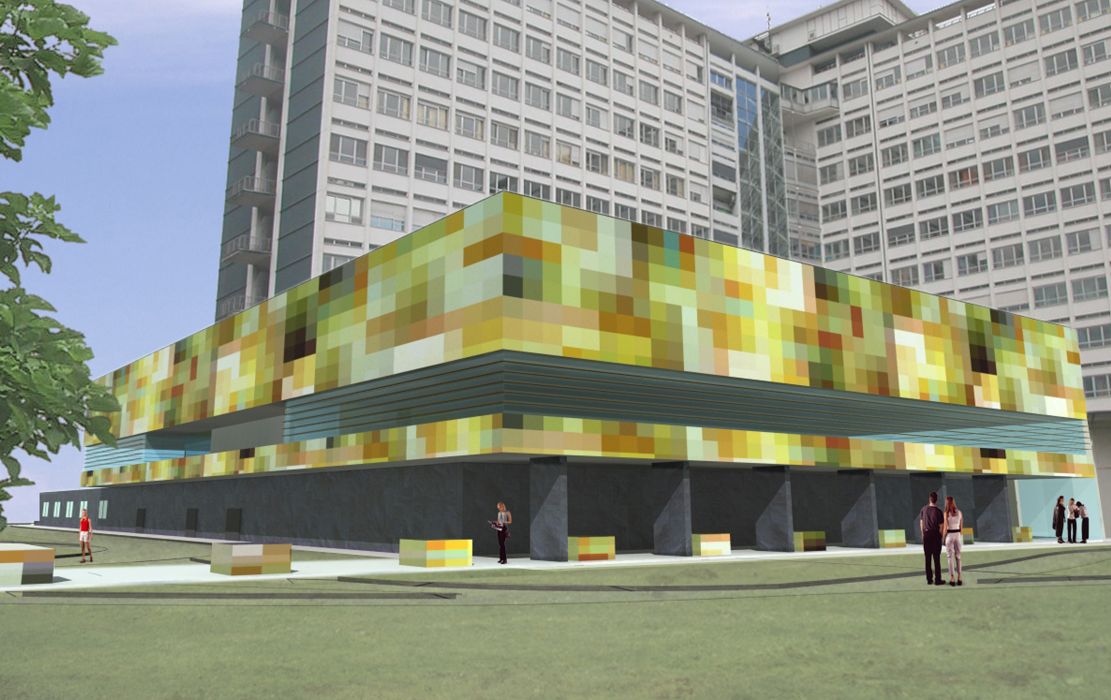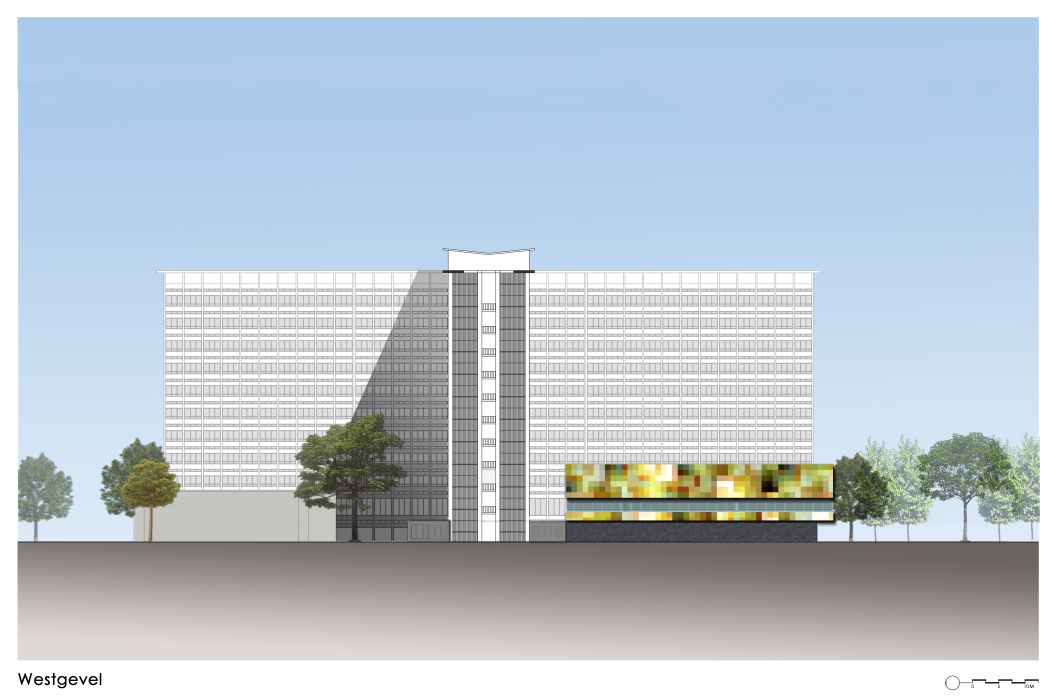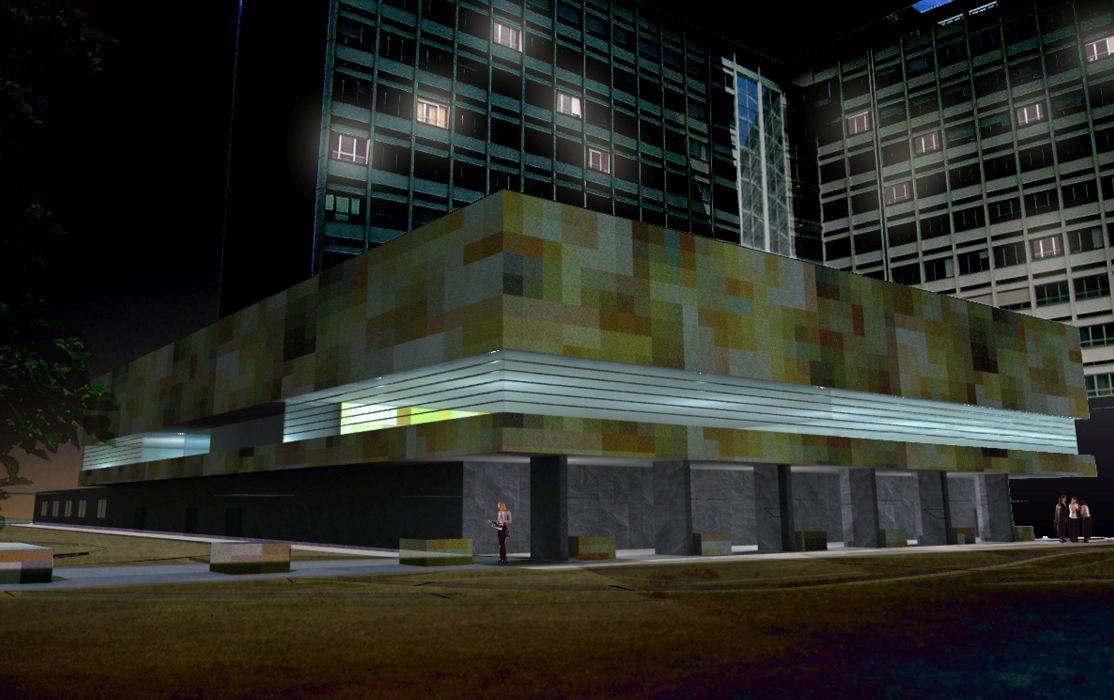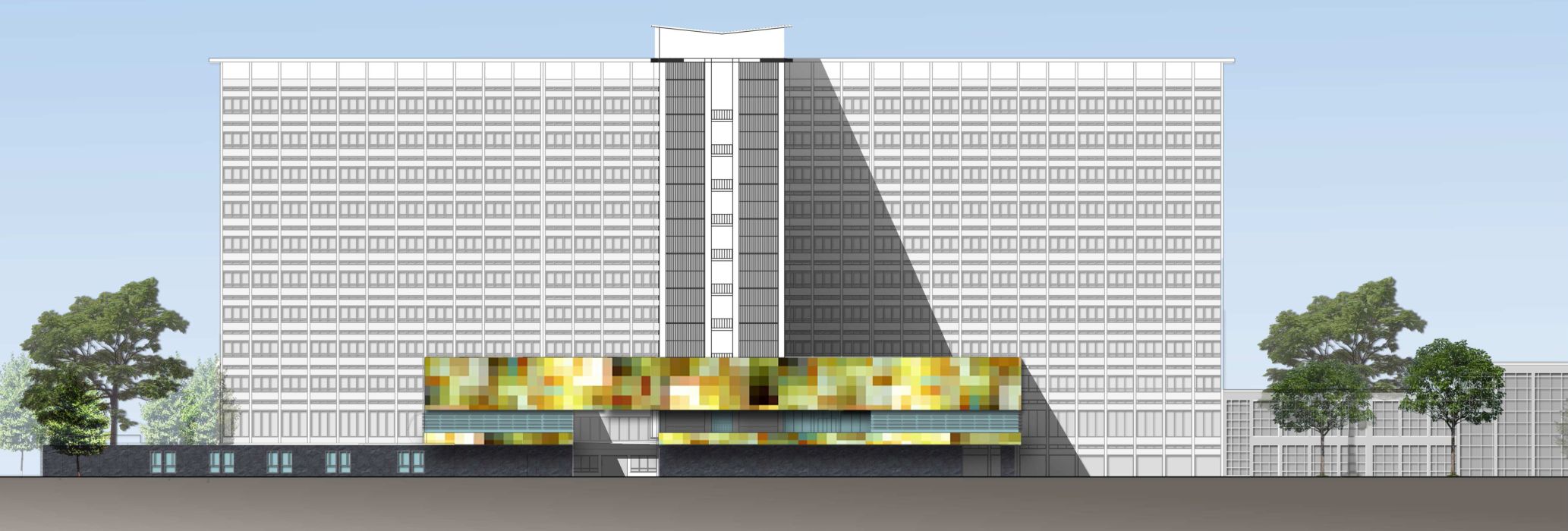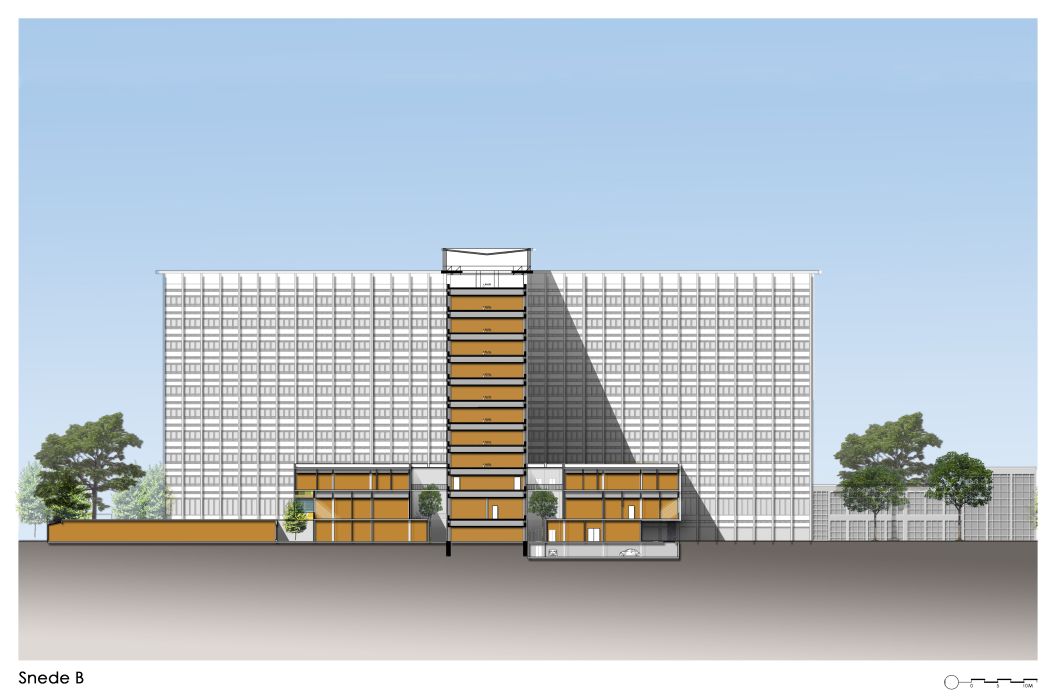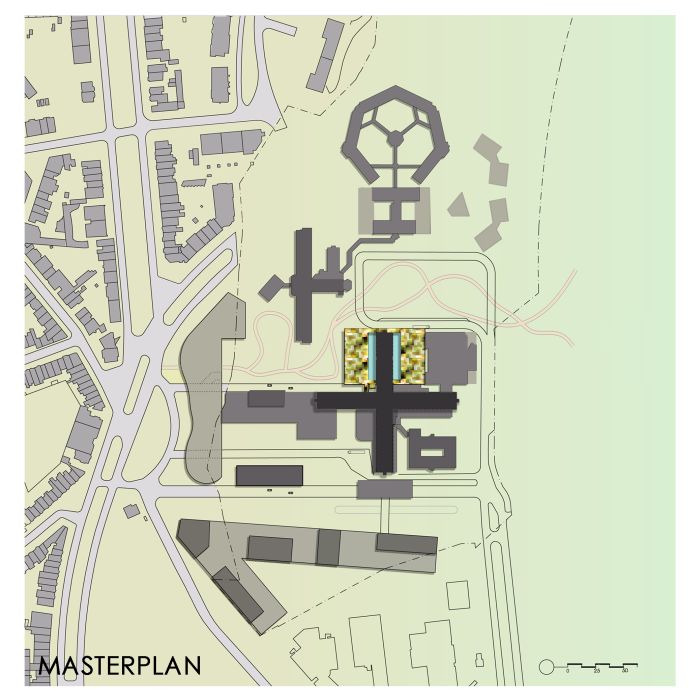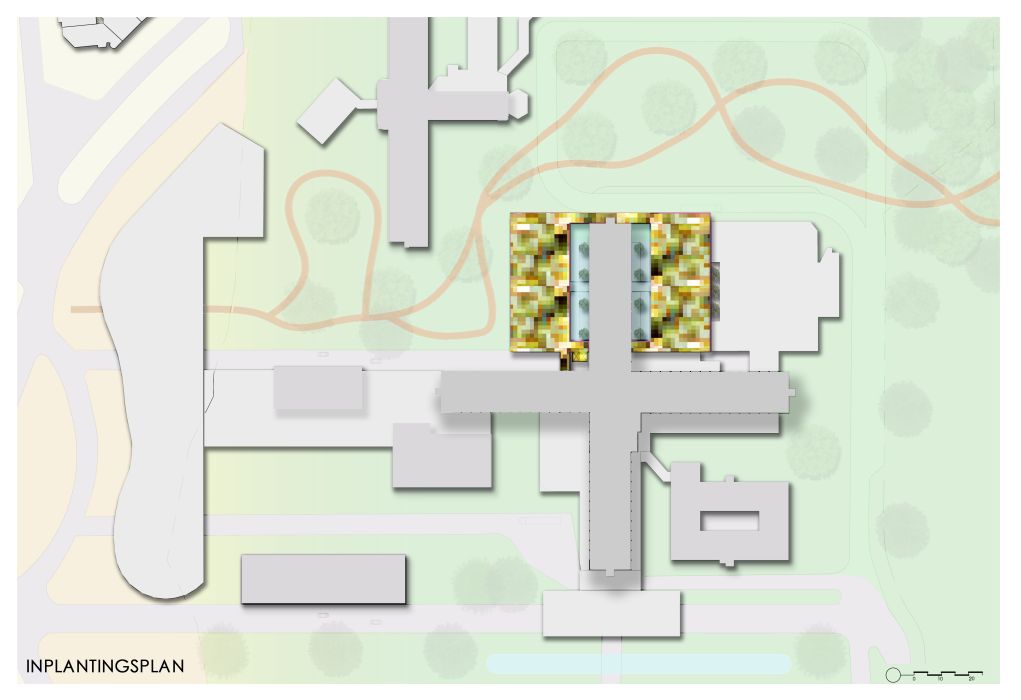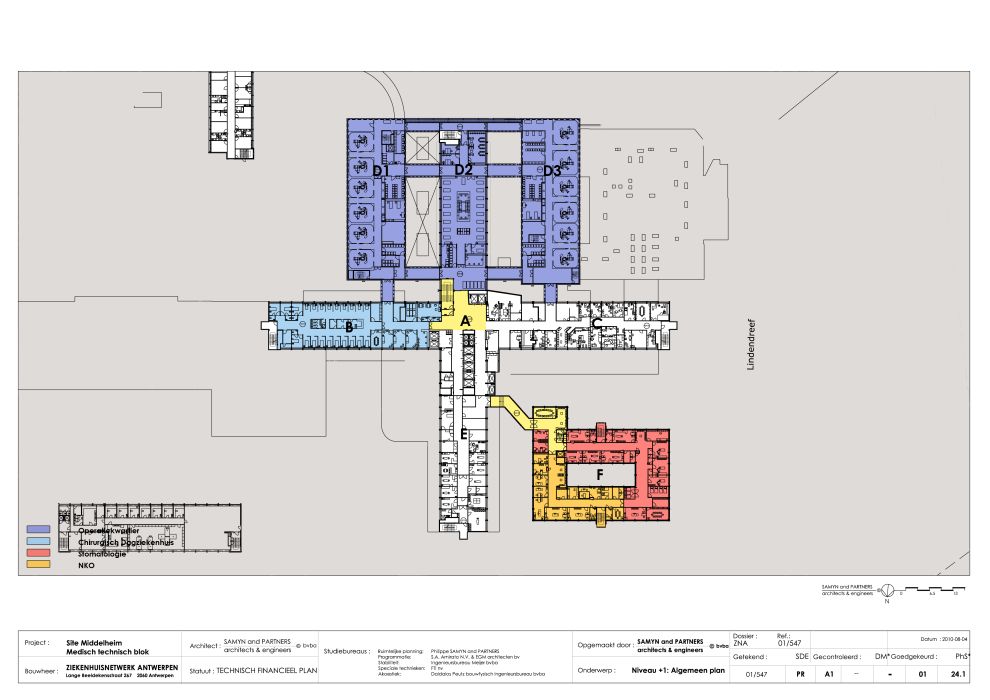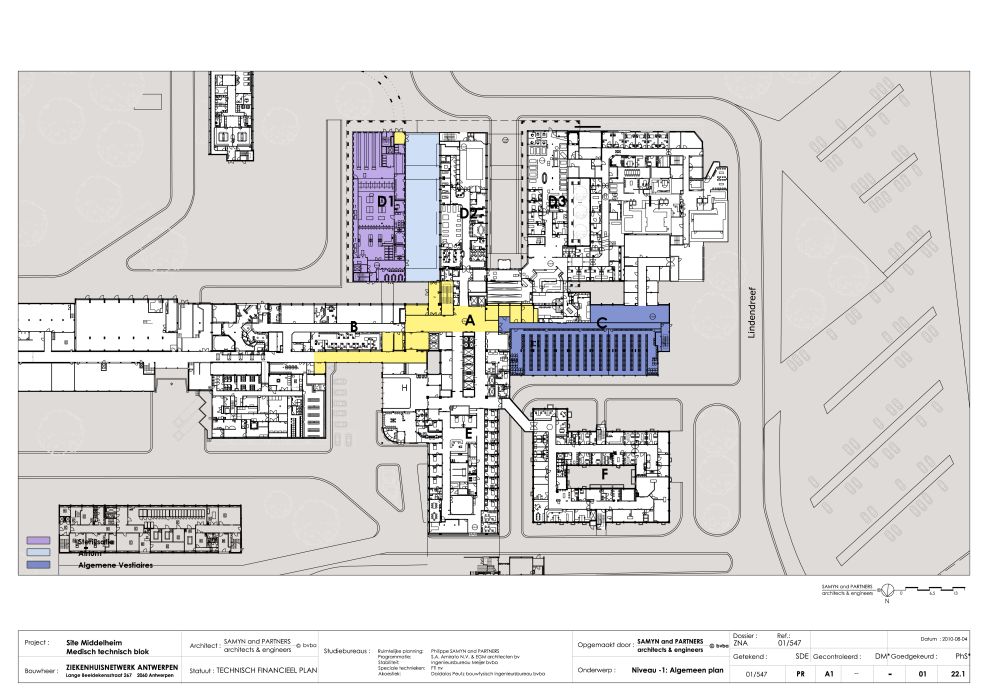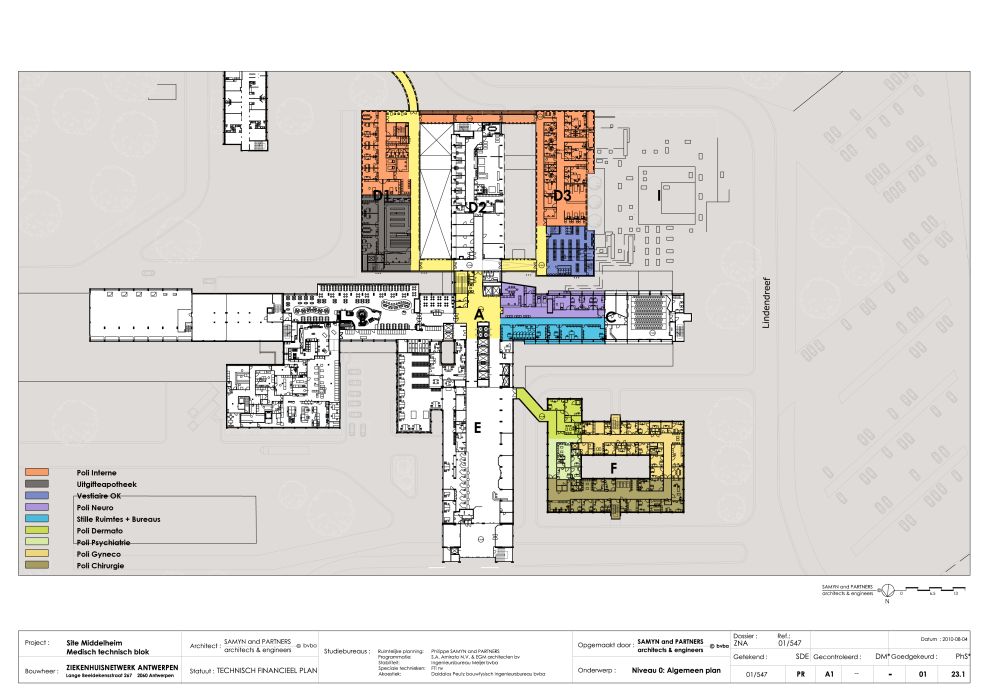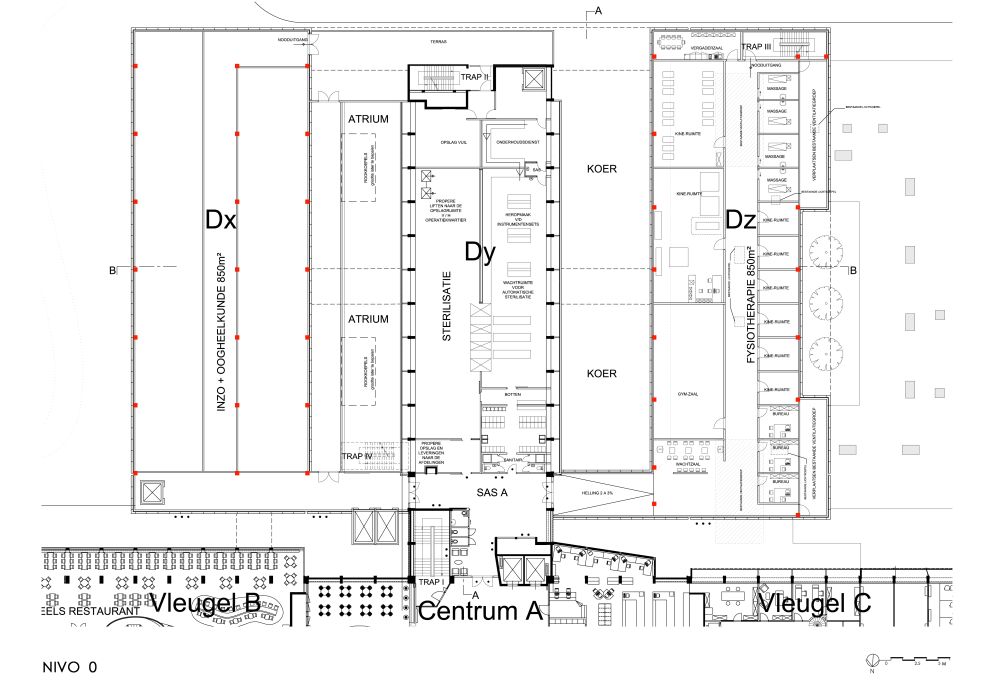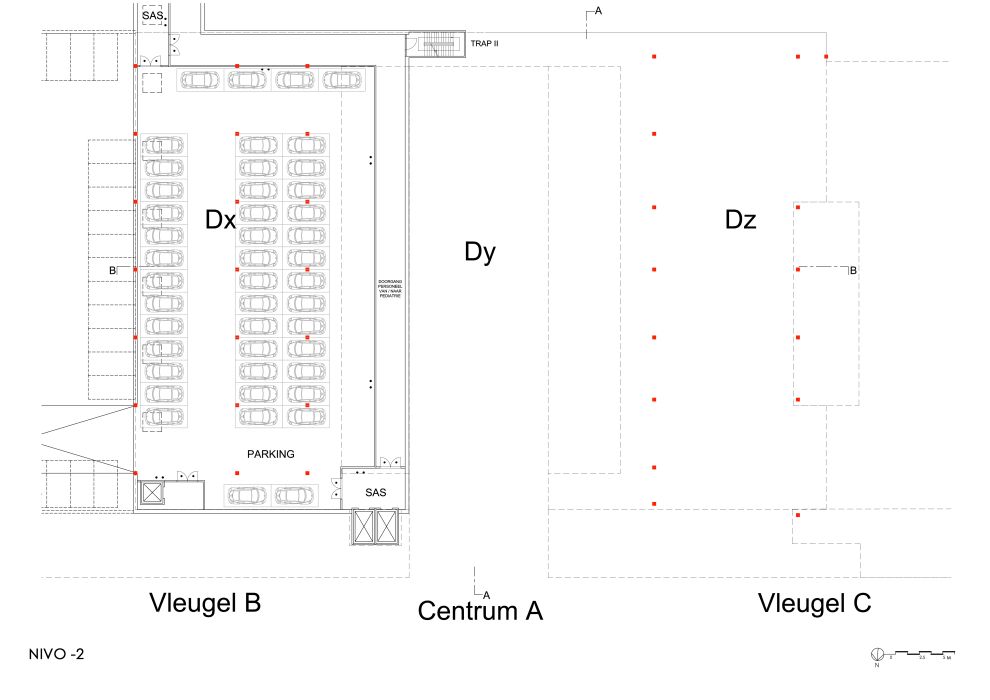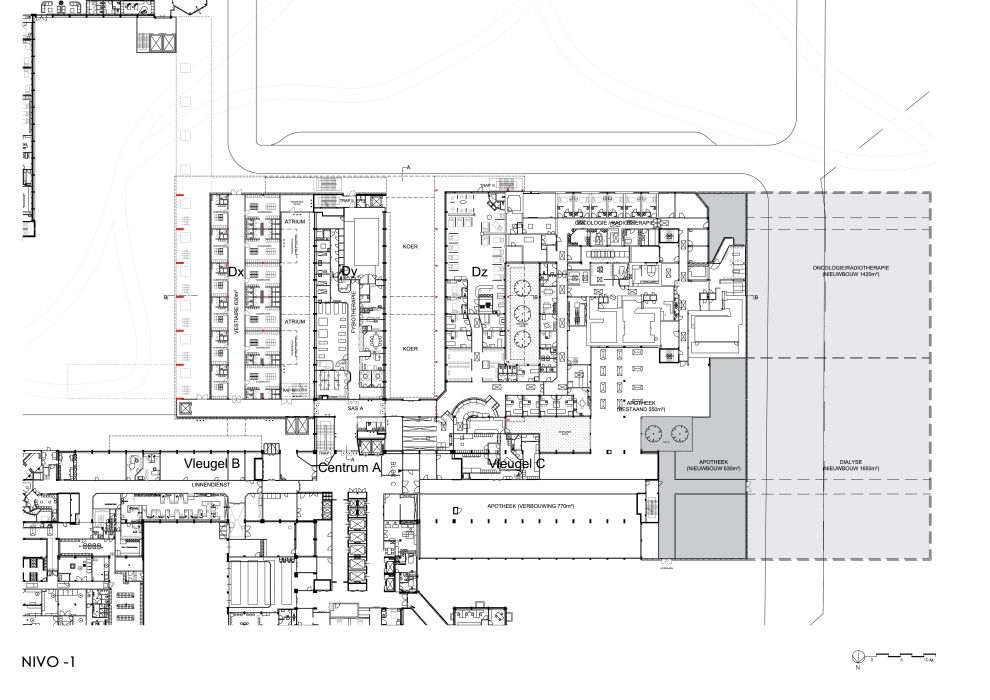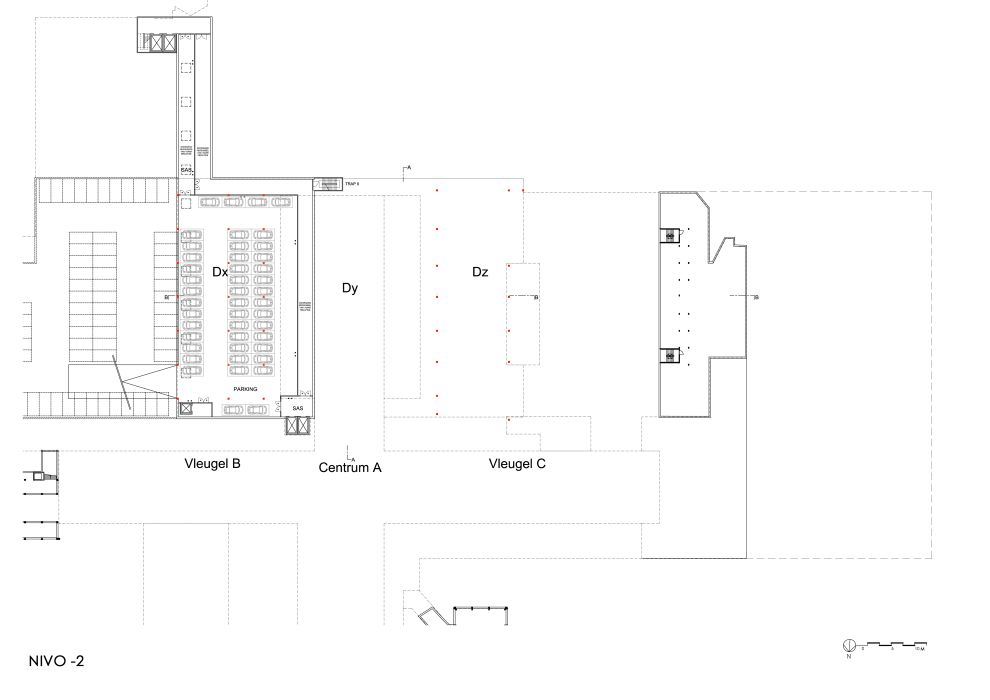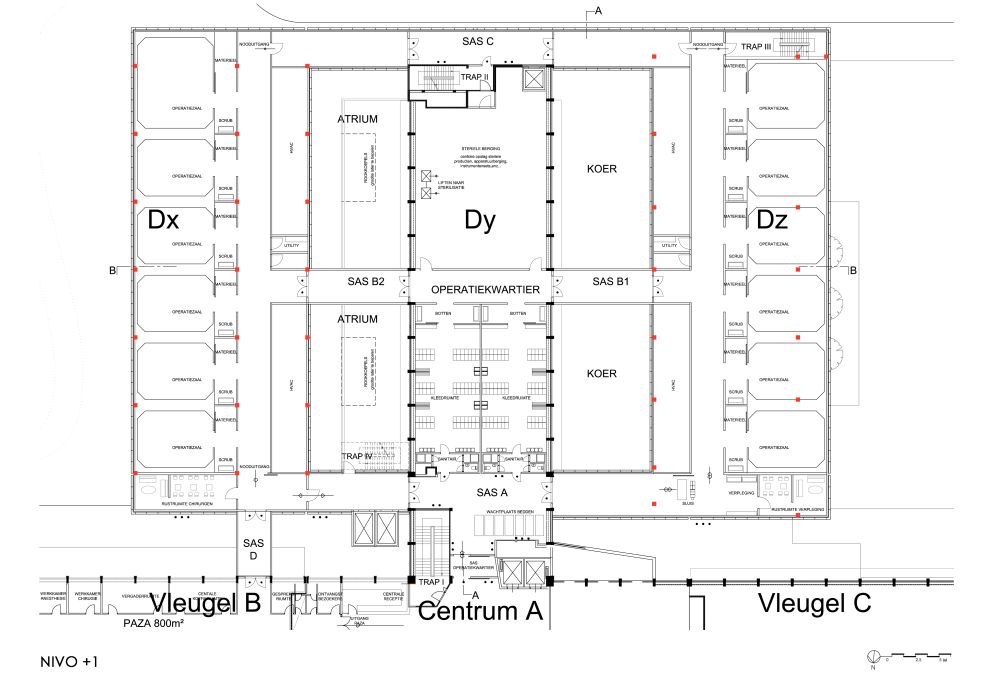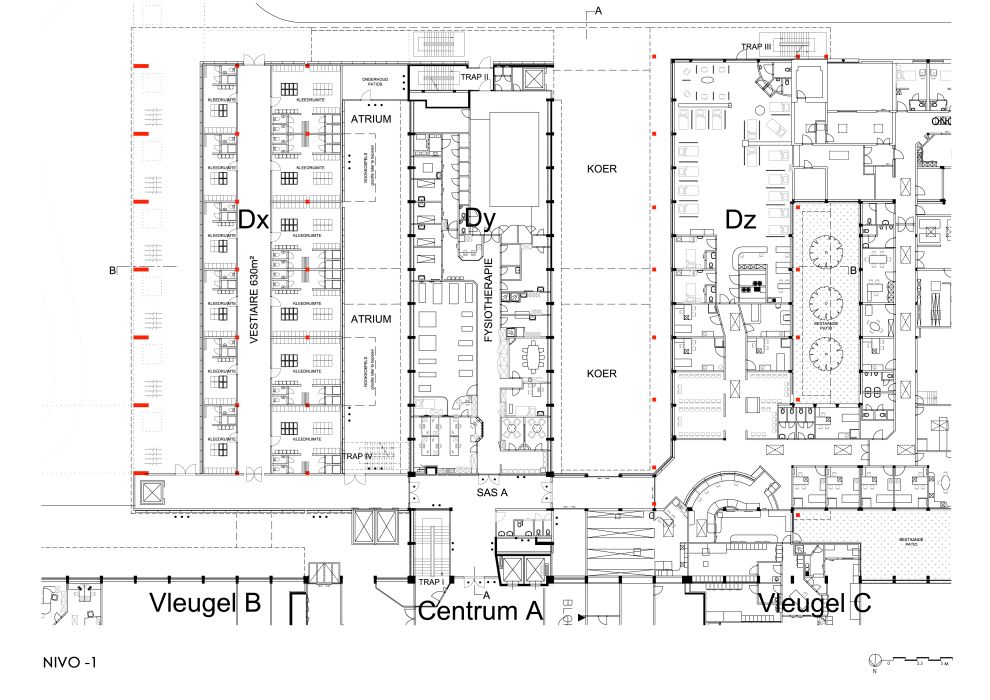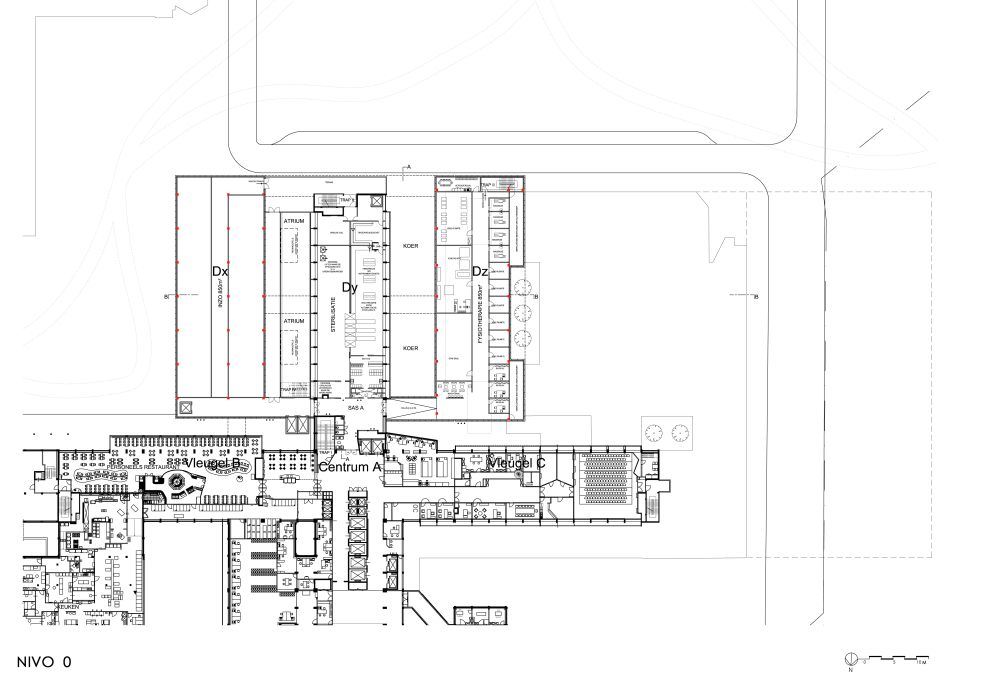© Drawing : SAMYN and PARTNERS
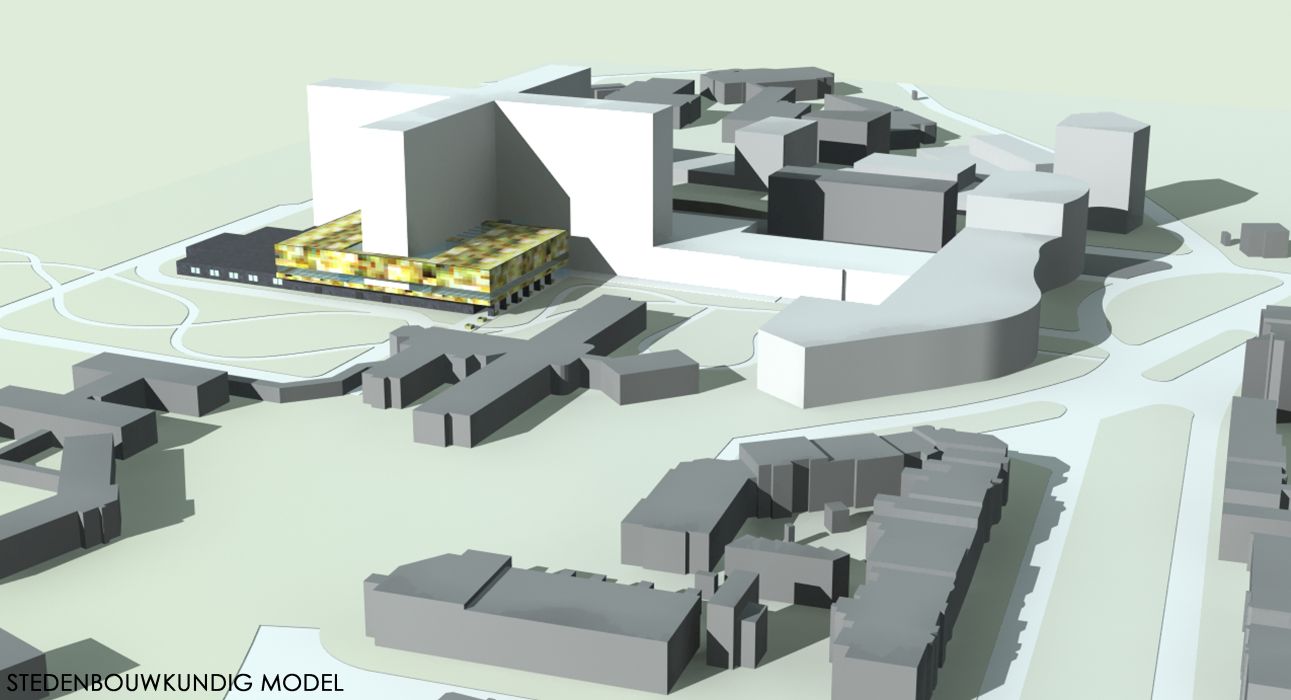
547 – EXTENSION ET RÉNOVATION DE L’HÔPITAL DU MIDDELHEIM
Antwerp, Belgium.
50°10’55,21” N, 4°25’11,92”E
9,095 sqm new, 11,298 sqm renovation; 2008 – (01/547)
- Architecture
- Structural engineering
- Building services
- Landscaping
The existing hospital
Built between 1958 and 1968, the Middelheim hospital is the work of the architect Renaat Braem, one of the top representatives of Belgian post-war architecture. It consists of a tower-hospital in the shape of a cross, quite classical for the time. The architectural expression, fully modernist, is characterized by the dominance of the structure made of concrete.
Since its construction, all of the hospital’s services have been going through, at least, one full renovation and the façade’s concrete has also been renovated. Several annex buildings were added around the main one.
The project’s program
The masterplan of the hospital suggests that the new medico-technical block should be constructed as an autonomous extension. The new block would be established in the last free quadrant and connected to the central circulation core of the main building by a type of umbilical cord that would mix all circulations together. The scheduling of the project calls for a transfer of the existing functions to the new block and for the refurbishment of the surfaces which would be then left free. The new block includes a new Surgical Block with 12 rooms, the Day Surgical Hospital, the Central Service for Sterilization, the Internal Medicine Day Hospital, the Pharmaceutical Branch, various consultation rooms and the central cloakroom. The ninth floor of the central building, now occupied by the surgical block, has to be rearranged as offices space.
The “internal extension” concept
Even though the tower cross schema seems to be quite simple, it has the major inconvenient of mixing up all of the circulation and the masterplan does not offer any improvement in this field. This is the reason why the project, which was presented for the competition and validated by the client, modifies this schema by suggesting a concept of “internal extension”: a new building shaped as a “U” and divided in three floors surrounds one of the existing wings in which circulations can be easily structured. This is particularly useful in the Surgical Block where internal and external flows (inpatients, logistics, sterile equipment, contaminated wastes, etc.) absolutely need to be separated from visitor’s circulations.
The greater compactness of the new unit reduces the total length of the circulation circuits and promotes the flexibility of partitioning but increases the depth of the floors. However, natural light penetrates into the heart of the useful areas via an atrium and a service courtyard located between the existing wing and the new extensions. Footbridges cross these connecting spaces at six carefully determined points and help structuring the circulation in an appropriate manner.
Flexibility
The concept aims at ensuring great flexibility in the reorganisation possibilities both on short and long terms. The structure, columns, beams and floors are made of prefabricated concrete all placed on the same modular frame of the existing building. The escape stairs, fixed element of the building, are situated at strategic points and their number is limited to strict necessary.
The façade is also unmarked and made of discontinuous light elements which are easily moveable, replaceable or swappable.
The proximity with the technical rooms minimizes the bulkiness of the distribution lines. Their large size and independent access allow maintenance operations to be performed without disturbance and ease equipment’s replacement.
Distribution of the services
On the underground floor (level -2) the archives are stocked. This floor is supposed to be soon connected with a future large underground parking lot.
At the ground level (level -1), the Central Service for Sterilization benefits both from a direct connection with the Surgical Block and from an external access to the logistical services in order to ensure full servicing of other hospitals from the group. All cloakrooms of the hospital are gathered in a single wing of the existing building.
Logically, the Internal Medicine Day Hospital is located at the public entrance level (ground floor). It is directly accessible from the main admitting desk hall. The Pharmaceutical Branch benefits from an unloading dock situated right at the lower level and shared with the Central Service for Sterilization.
At level +1, the Surgical Block extends in the two new wings as well as in the central existing wing. Twelve operation rooms of different size are fitted. The placement of the rooms and of the pre-and post-operations areas, can be easily changed, partly as to form specialized groupings. All rooms can benefit from daylighting.
The technical rooms that are necessary for the Surgical Block have been placed just above it, at level +2.
The last useful level of the tower (level +9) is rearranged as administrative offices.
Vertical circulations
Moving to the lower floors services that used to generate a lot of vertical traffic reduces the use of the existing lifts. The situation has also gotten better thanks to the restructuring of the lifts’ batteries at the centre of the cross: two existing freight elevators are being repurposed as priority medical lifts and three small freight elevators formerly reserved for meal services, are replaced by two large freight lifts for general use.
The construction’s logics (“Sustainable Construction”)
The new building is constructed so as to ensure a rational use of energy: the façade’s orientation, the abundant and ubiquitous natural light, a reinforced isolation with no cold bridges, high efficiency thermal installations, a heat recovery ventilation system, a centralized technical management, etc. The environmental footprint is also minimized: acoustic comfort, rainwater recovery, easy maintenance, etc.

